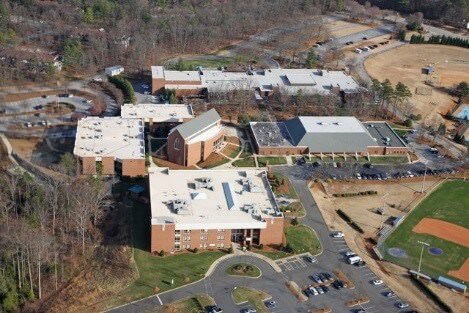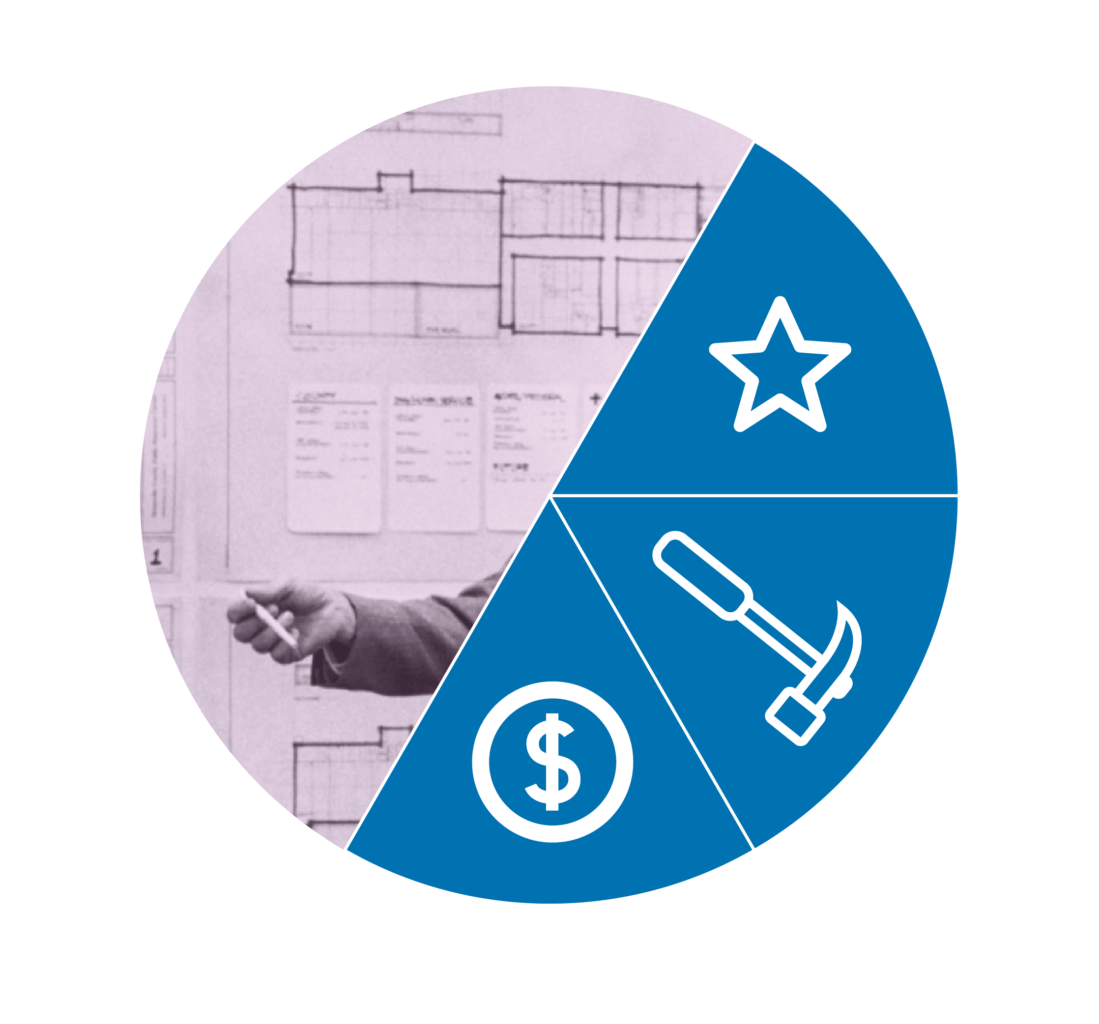Kirk’s Paradigm says, for a great project you’ve gotta have the right owner, the right program, the right site, the right budget, the right contractor, and the right architect. If one of these is missing, the whole project can suffer for it. If you can get all six things to come together, then you have an opportunity to make something great.
This month: Gotta Have the Right Site!

Location, location, location. The site of a building is one of the most distinguishing characteristics of any project, the greatest outside influence, both in potential design options and operationally over time. Many attributes of the site are permanent and unchangeable. If the design is for a prototype to be built on many different sites, like a branch bank, or franchise, the site may be the only distinguishing characteristic between two copies. In the case of a renovation, the existing building itself is its own site. Design is a dialogue of sorts between the existing conditions of the site, context, existing buildings, vision of the owner, and imagination of the designer.
What makes the “right” site? What Kirk meant was that a great project needs an appropriate setting. There are many examples of beautifully designed and detailed buildings on “wrong” sites. Sometimes we start a project with the program and are able to advise our clients as we evaluate different sites. More often, the site is a given. The solar orientation, views, adjacent roads, green space, water flows, are givens. Should the proposed building command the site, like the Parthenon on the Acropolis overlooking Athens, OR nestle into a hillside and be landscaped to blend in? Either way, the design must respond or choose to ignore, within limits, the attributes the site brings to the project. Asked another way, “The site, lot, land, existing building, etc. is a given – what can I do about it?”
First, as architects, we visit the site. Pretty basic, but surprising how often this first important step is skipped. You need to spend some time on-site observing. Each place is unique. Is it urban, suburban, or rural? South facing or shaded? Public or private? A design cannot respond to the context if it’s designed … wait for it… out of context. You can’t change where the sun tracks across the sky or whether there is an agreeable view. Listen. Look for natural features, research the history of the place, the geology, adjacent transit routes, view sheds, etc. Are there legal constraints? Wetlands? Incompatible neighbors or uses nearby? Consider where the people will arrive, park, walk, or view outside. A good reference guide for use on any project is the framework outlined in the Sustainable Sites credits in the LEED green building rating system.
Second, we consult with other professionals. At First Presbyterian Greenville, we helped the church expand by closing one block of a city street where the church owned all of the property on both sides of the street. Our site for the project was the vacated street, a parking lot, and a vacant bus station. Our civil engineer for the project, Joe Barron, said something like “Lay-people, meaning non-engineers, look out across the street and see wide open spaces. But a civil engineer looks out over the same street and sees an underground interconnected web of utilities, pipes, conduits, rights-of-way, easements, and drainage that all needs to be identified and either avoided, removed, or relocated and reconnected.” And we did.
Last, we stay flexible. When CGD was selected by Christ Church Episcopal School to help them plan for a new chapel, we looked at several sites on the 70 acre CCES campus for a new chapel. Initial thoughts were to place the chapel at a prominent entrance to the campus.

As design concepts started to evolve, the suggested siting of the chapel moved to be between two academic buildings. Ultimately, we helped the owner come to the consensus that the best site was in an existing quadrangle formed between the major academic buildings of the Lower, Middle, and Upper schools. The design solution evolved with each new site consideration and comments from the many stakeholders. With the chapel at the center of campus, at the crossroads of student traffic, CCES visibly reinforced their mission of Christian formation and values education.
I’ve heard more than one non-native English speaker refer to the “site” as the “situation”. I like that expression, in that it evokes a fuller understanding of the constraints, opportunities, history, and possibilities that each site or situation brings.
Obviously, depending on the situation.

Go to Part IV: Gotta Have the RIGHT BUDGET
Kirk’s Paradigm is brought to you by Principal and project architect, Scott Simmons.


